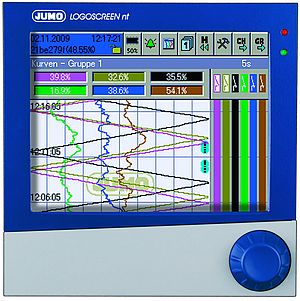Electric motors are the unsung hero of the Fourth Industrial Revolution, bringing to life anything from robots to 3D printers. Unfortunately, they are not unbreakable and, when they do fail, can bring an entire production line to a halt. They are also a huge consumer of energy, using nearly half of all the electricity generated in Europe. The good news is that, with energy efficiency breaking new records and the Industrial Internet of Things (IIoT) enabling predictive maintenance, it is now possible to improve the performance of both motors and the machines they power. It’s all about selecting the correct motors and the other key components of a properly-dimensioned, efficient and safe drive system. Here Andrew Guest, Distrelec, explains how to get there sharing four useful tips.
Tip 1 – Remember: size matters
From electric cars to drones and cobots, reducing weight and footprint without compromising power is what many engineers currently strive for. And, perhaps unsurprisingly, the demand for smaller and lighter yet powerful motors – with a high power-to-weight ratio – is growing. Clearly, size matters when selecting a drive system meaning that all its components, from motors down to variable speed drives (VSDs), servo drives and actuators, need to be correctly dimensioned both in terms of size and power.
Compact solutions that come in a variety of power options while keeping footprint to a minimum can come in handy. Omron’s new S1 servo drive range, for example, come in a very compact design: the height stays the same no matter the power. Pilz’s PMDs range of relays offers set, small dimensions - 87mm x 22.5mm x 122mm (H x W x D) - for all operating voltages, helping save space in the control cabinet without compromising on power.
In those applications where actuators are required, size should also be taken into account. For example, SMC’s new JCQ series of compact cylinders are up to 40% smaller (in terms of volume) and up to 45% lighter than previous models in the same bore size.
Tip 2 – Take efficiency to a whole new level
Selecting energy-efficient motors is not only a matter of compliance with the Ecodesign Regulations 640/2009 and 4/2014, which require all motors with a rated output of 0,75-375 kW to reach at least the IE3 efficiency level (or IE2 if combined with a VSD). It can also slash energy consumption and Total Cost of Ownership for end users while giving machine builders a unique selling point.
So how can better efficiency be achieved? Looking at a motor’s efficiency rating and/or combining it with a VSD is the obvious answer, but there are also other important factors to consider. For example, Trinamic‘s new full mechatronic solution, which combines a stepper motor and driver electronics, comes with load-adaptive automatic current scaling. By enabling the motor to adapt the required current to the load, this functionality can help reduce energy consumption by up to 75%. This in turn helps keep the system cooler, extends the motor’s life and reduces cost.
Tip 3 – Keep one step ahead of breakdowns
Changes to a motor’s conditions such as vibration, temperature, current intake and insulation resistance can all be signs of an imminent failure so keeping an eye on them in real time is key. This is exactly what some of the latest IIoT-enabled condition monitoring devices can do.
Omron’s K6CM range of motor monitoring relays, for example, automatically and continuously monitor vibration, temperature, current intake and insulation resistance of up to 10 motors. By displaying a motor’s status on an alarm bar in three colours - green (normal), amber (warning), and red (critical) – they immediately detect and flag up any abnormalities helping prevent breakdowns.
Another key component to look for when monitoring a motor’s conditions are controllers. By connecting to monitoring devices such as monitoring relays or sensors, controllers such as Schneider’s Modicon M221 enable immediate access to a motor’s critical data from any location via Ethernet, wireless access and web servers. A maintenance engineer can receive alerts directly on their smartphone or tablet and perform predictive maintenance – for example by changing parameters remotely - to prevent potential failures.
Tip 4 – Don’t forget to protect
Monitoring devices can help prevent most failures and extend a motor’s life. Protection against dangers such as sudden overload, however, is also key to safeguarding the motor, the machine they power and the people that operate them. This is what safety relays are for.
Ease of use and installation and versatility together with the ability to integrate the device into the IIoT infrastructure are some of the key features to look for.
Pilz’s PMDs range of relays, for example, features push-in technology offers easy, tool-free installation. They are also easy to use as parameters can be quickly set on the front of the device – all you need is a screwdriver.
Siemen’s Sirius series of overload relays are ATEX-certified, meaning they can be used in a variety of applications, including explosion-proof motors. Thanks to an IO-Link, it can easily connect to a higher-level control and therefore integrate it into an automation environment.























